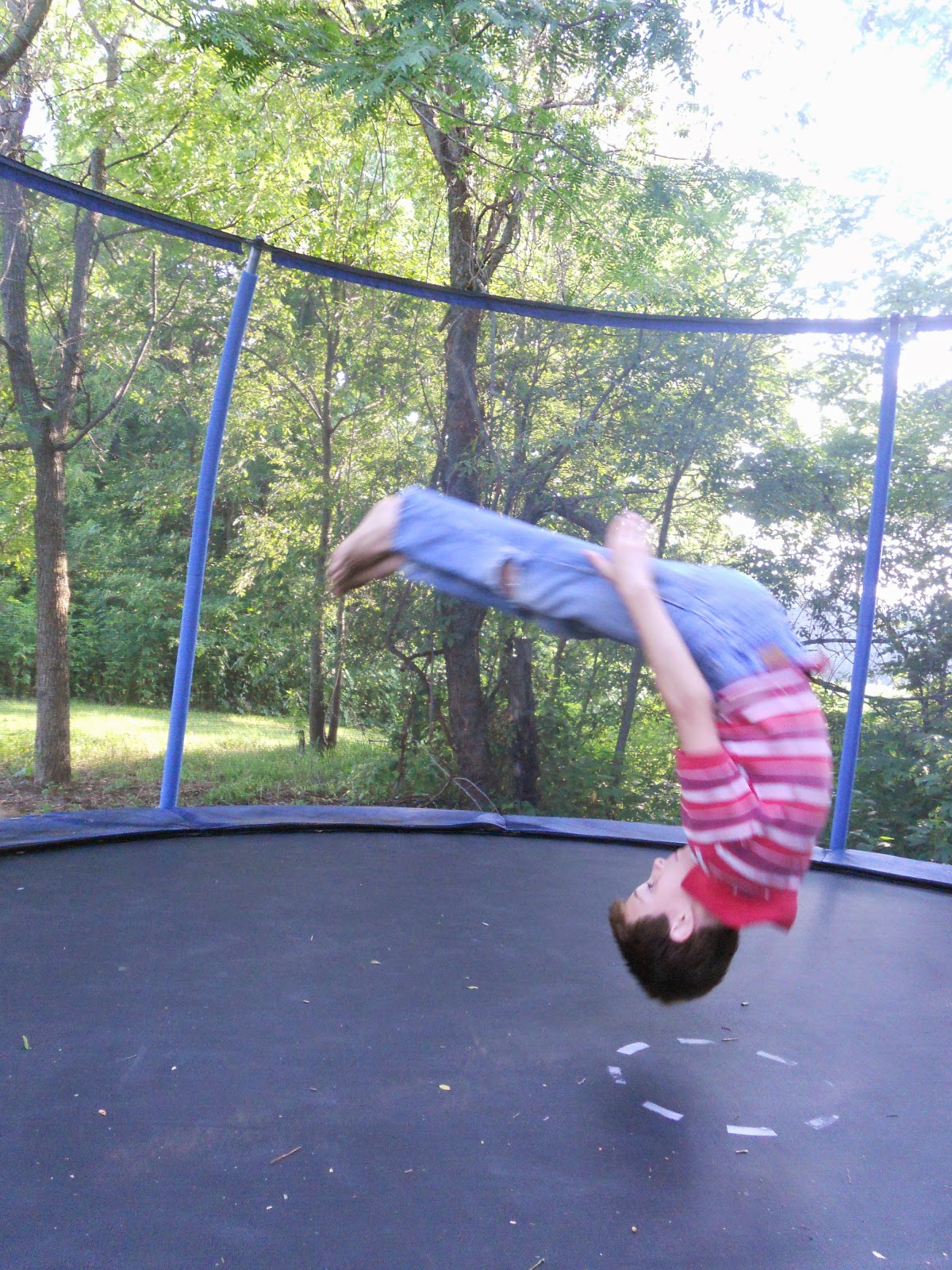Turning Education Upside Down
©2013 Home Life, Inc. Originally published in Practical Homeschooling magazine. Used by permission.
Educational
fads so often detract from real learning instead of achieve their
lofty goals. Growing up in the shadows of a major university with an
influential ed school, I endured my share of educational experiments
including open classrooms and sensitivity training. But as I read
about one of the latest wrinkles in education, the flipped classroom,
I realized this one has true merit, and in fact already takes place
in many homeschools.
Just what
is this promising new idea? A flipped classroom marries frontline
technology with old-fashioned tutoring. Think back to your high
school Algebra I class. In mine the teacher, Mr. F., stood at the
chalkboard each day and laboriously presented new concepts. Then he
assigned homework practice problems, and if time remained, we
reviewed the work from the previous day or watched basketball movies
as Mr. F. was the b-ball coach. Kids who quickly grasped the new
material surreptitiously worked on other homework during the deadly
dull lectures (and basketball films), while other students left class
still in a fog. The real learning usually came at home as we wrestled
with problem sets.
Now turn
this picture upside down. Instead of solving problems as homework,
the students prepare for class by watching an instructional video or
listening to a podcast at home. When they come to class next day,
they work independently on math problems. In this scenario, the
teacher acts as an academic coach, circulating through the classroom,
assisting those who struggle and challenging those quickly mastering
the subject. Occasionally the class might tackle some algebra
projects involving real world applications or spend the class session
playing math games. In other subject areas, flipping the classroom
allows more time for hands-on activities or laboratory experiments.
Even
though flipping is a hot new idea, it has much older antecedents.
Decades ago teachers at Phillips Exeter Academy began testing a
strategy called the Harkness Method, a precursor to the flipped
classroom. With this model, students prepare at home via books and
articles, and then come to class to participate in applications and
round-table discussions (“Harkness”). The Harkness Method is
still used today in a wide variety of settings and all types of
classes, but the teachers using technology to “flip” have
generally been math and science instructors. Two Colorado high school
chemistry teachers, Jonathan Bergmann and Aaron Sams, began
experimenting with the concept, discovering that the students became
more engaged with the personal attention. Humorously, they and others
began to refer to the traditional teacher as “the sage on the
stage” while in a flipped classroom the teacher acts as “a guide
on the side” (Bergman, et al).
Influential
though Bergmann and Sams were in spreading the idea of flipped
classrooms, the online Khan Academy is responsible for making the
idea mainstream and for providing vast quantities of video lessons.
In 2004 Salman Khan, then a hedge fund analyst with MIT degrees in
electrical engineering, math, and computer science plus an MBA from
Harvard, began tutoring his cousin in math via the internet. Soon he
was posting the lessons on YouTube where their popularity exploded.
Now his website, which has the goal of reinventing education,
includes over 4000 short instructional video tutorials on math,
physics, chemistry, economics, art history, civics, and more. But
students can do much more than simply watch videos on the site. Many
of the lessons also include practice modules, and students are
rewarded for accuracy and speed in solving problems (Khan).
Interestingly,
Khan says he knew right away his system would be useful for
homeschoolers, but he didn't at first see the extent to which other
teachers would use the site. Today teachers of all sorts are using
Khan Academy lessons as part of their flipped classrooms. Fifth and
seventh grade classrooms in Los Altos, CA piloted the Khan Academy
for half of their math period, finding the computer instruction freed
up time for activities such as math games and robot building
(Gallagher).
The Khan videos work best as extra practice or review, though, and
should not comprise an entire curriculum, partly because they lack
the breadth of a full course. My college freshman has found helpful
videos to brush up some of his math skills while he's been taking
calculus classes. (And I should mention that the Khan Academy makes a
great way for a parent to get a rusty math brain back in shape or to
acquire new material!)
Just what
advantages do flipped teachers see? Many claim their students become
more active learners and take increased responsibility for their
education. Teachers often find they have more individual time with
students, more guided practice, and more time for projects. Because
much of the content is delivered via technology, when a student
misses class or needs to review something, he can simply replay a
lesson. Finally, students progress at their own pace, so learning
becomes tailored to the needs of individual students, with the aim of
mastery rather than a lock-step progression.
These
benefits may sound familiar to homeschoolers, and in some ways, what
we do at home often resembles a flipped classroom. Home educators
rarely spend loads of time delivering lectures, and we are quick to
seek out excellent means of imparting instruction, whether that is
via online classes or quality classic books. We already provide our
students with individualized programs and allow them to conquer
material at their own pace. Our children typically receive a great
deal of one-on-one instructional time. Since we already have
non-traditional classrooms, is there anything homeschoolers can learn
from the flipped class model?
First, we
should consider why and how we use technology in our homeschools.
Proponents of flipped classrooms argue that with their model
technology, rather than depersonalizing education, actually increases
face time between teacher and students. This philosophy can help
homeschoolers maximize the way we use tech content. Video and online
courses are a boon to busy homeschool parents teaching a number of
children subjects at varying levels. But if we merely drop our
children off in front of the computer, we're missing some of the best
parts of teaching our children. Instead, when we do choose to use an
online or video teacher, the technology can provide basic content,
but then we can build from there, coming in at points of difficulty,
encouraging in some areas, challenging in others. For these classes
think of yourself as a personal tutor rather than a teacher.
The
flipped model can also be used for teaching several grades at once at
home. In our family we study history with a multi-age unit study
curriculum. During the first part of the week the older children
learn on their own by reading, researching, and creating projects
while I work with the younger ones. My job with the older students is
primarily as coach to help them make best use of resources and time,
and they are becoming adept at self-learning. At the end of the week
we come together to discuss what everyone has been discovering.
Frequently the best sessions are those in which each child presents a
topic of his choice via PowerPoint or other means. It is great fun to
see the synergy develop as the children share what they have learned.
Starting from their new knowledge, we can then delve more deeply into
historical issues raised by their research. Using “class times”
such as these to maximal advantage takes planning and preparation,
but when I do set aside time to think this through, our weekly
sessions are much richer.
Additionally,
the inverted model of teaching offers some great applications for
homeschool co-ops and hybrid schools. Earlier this year the young
elementary students in my anatomy co-op dissected cow eyes. In
preparation, I asked each family to watch a short Youtube video of a
dissection in addition to reading about vision. Each of the ten
children in my class came to co-op eager and ready to dig into their
own cow eyes. I was amazed at how much they remembered from the video
and how carefully these children performed their dissections with
only minimal assistance. The short video preparation paid off in the
smoothest class dissection I've ever led, and you can be sure I'll be
flipping in this way in upcoming co-ops classes.
Time will
ultimately tell whether flipped classrooms are a passing fad or a
paradigm shift. For any teacher, flipping should be just one tool in
the toolbox, to be used judiciously. So far, it seems to have more
applications in STEM classes than in the humanities, though the older
Harkness Method is still being used across the curriculum. The best
flipped classrooms appear to combine direct instruction with more
experiential and practical learning and require much teacher input.
Making it work takes a thorough knowledge of the subject matter,
excellent resources, and planning.
In
many ways, the homeschool model already flips education on its head.
The basic idea of having students first study something
independently, via technology or a paper-and-ink book, and then
discussing with us about what they are learning, pretty much sums up
much of homeschooling. Still, examining how traditional schools use
the flipped classroom model and considering applications in our quite
different setting can help us as we re-think the best ways to teach
our children and make the optimal use of current technologies.
“TheAmazing Harkness Philosophy." . Phillips Exeter Academy. Web. 30
Apr 2013.
Bergmann, Jonathan,
Jerry Overmeyer, and Brett Wilie. ""The Flipped Class:
Myths vs.
Reality"." The Daily Riff. Web. 30 Apr 2013.
Reality"." The Daily Riff. Web. 30 Apr 2013.
Gallagher, Alyssa.
"Los Altos School District & Khan Academy ." Innovate,
Create, Educate.
Los Altos School District , 2 Sept. 2012. Web. 30 Apr 2013.
Los Altos School District , 2 Sept. 2012. Web. 30 Apr 2013.
Khan,
Salman. Let's
Use Video to Reinvent Education.2011. Video. TED. Web. 30 Apr 2013.
Note: In the year+ since I wrote this piece, it has been interesting to see this concept of the flipped classroom becoming more and more prevalent. Peter, who has just finished his freshman year at Indiana University, had one math class that used the flipped model entirely and a business computing class which made some use of the idea. Both were very successful and seemed to make good use of both students' and instructors' time.
Note: In the year+ since I wrote this piece, it has been interesting to see this concept of the flipped classroom becoming more and more prevalent. Peter, who has just finished his freshman year at Indiana University, had one math class that used the flipped model entirely and a business computing class which made some use of the idea. Both were very successful and seemed to make good use of both students' and instructors' time.




Comments